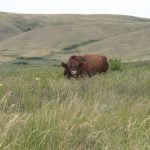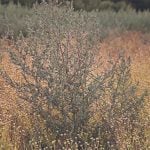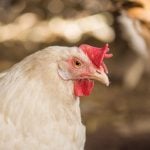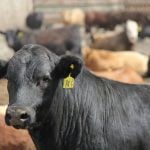When there aren t enough hours in the day to even get all the essential jobs done, it s no surprise that writing job descriptions, drafting interview questions and carrying out performance reviews often plummets to the very bottom of the farm priority list.
That doesn t make it wise, though. In fact, in a marketplace where farmers have twice the rate of unfilled vacancies compared to most other sectors, using smart human resources practices to give your farm a competitive edge may net you a healthy payback for your precious time.
Read Also

Will investments in defence benefit Canadian agriculture?
A bump in Canada’s NATO spending commitments could lead to infrastructure investments that would benefit rural areas
Besides, there are new tools to help get the job done faster and better.
This need for fast job descriptions hasn t escaped Sara Mann, associate professor with the University of Guelph s department of business. With a grant from the Ontario Agriculture Ministry, Mann has put together a free online tool that can help farmers create a good basic job description within 10 minutes, complete with interview and performance appraisal questions based on the tasks in the job description.
At www.aghrmanagement.com, the HR Tool process is so easy, you probably won t really need to watch the site s tutorial video that explains the why and how. Still, it s good to know it s there if you re a keener or aren t quite sure what you re getting into. If you re ready to move on, though, click on the here in the text below the video in order to go instantly to the working part of the site.
There, you can quickly select what category you re working in, and what job you re trying to fill (or have already hired someone to do).
The idea came to Mann while doing human resource training sessions with farmers who said they hired staff mostly by going on gut feelings. They simply had no idea why writing a job description could help their businesses, Mann recalls.
Farm jobs hard to fill
The need for better on-farm management of human resources is growing. Statistics Canada s 2008 Labour Force Survey estimated that Canadian farms employed 336,200 people, with about three-quarters of these employees working on farms with receipts over $100,000.
According to Canadian Agricultural Human Resource Council (CAHRC), the farm sector s vacancy rate is about nine per cent, nearly double that of other sectors. Three in four employers reported at least one vacant position in their operation. Even worse, employers reported a 20 per cent vacancy rate for seasonal positions, which adds up to almost 17,000 vacant positions. (One response to this high vacancy rate has been a steady increase in the use of temporary foreign workers.)
CAHRC has surveyed 550 employers and the results indicate that in the next two years, farmers will need to fill 50,900 non-seasonal positions and an additional 38,800 seasonal slots. About half of these are for general farm workers but there will be a considerable need to fill a variety of technical, specialized, skilled and management jobs.
Having a job description can raise the odds of getting the best people into those jobs, mainly by giving the hiring process a structure with standardized questions based on tasks. Such a process helps take any bias out of the questions and selection, says Mann, and will help with performance appraisals too.
An accurate job description should also help attract well-qualified people and make it easier to eliminate people who won t perform well.
The stakes may be bigger than you think. When workers are hired without any selection filters and then are put to work on a farm with a well-designed piece rate, research shows that the best employees will work four to eight times faster than the slowest, points out Gregorio Billikopf, University of California professor. Hiring the right person for the job may be the most critical management decision you make.
By sticking closely to the duties, skills and knowledge required of the position, you can avoid venturing into personal traits and unintentionally building bias into the hiring and performance assessment processes.
In larger corporations, issues like tardiness, appropriate attire, ability to learn, and trustworthiness are often gleaned from personality questions or integrity tests. Mann says for farms, it s better to get that kind of soft information from references or previous employers. Asking questions about these issues during the interview can lead to biases affecting the process.
Besides, says Mann, sticking to task-oriented questions gives you your best chance of hiring the top person for performing the specific tasks you need done.
However, if you re hiring low-skill labour on the assumption that you ll train employees, these personality traits can be very important. Some position descriptions, such as Dairy Australia s free downloadable forms at
www.thepeopleindairy.org.au ,list personal competencies such as the ability to be punctual on a regular basis and appropriate communication in the event of being delayed.
A better interview
Mann says you shouldn t directly ask in an interview or performance review about these traits. Instead, focus on the tasks. Having a written description naturally leads to job-related questions and avoids asking different questions for the same position, so the process becomes more objective.
Moreover, your farm s hiring and firing process will have some legs to stand on in court. The court was more likely to rule in favour of the defendant if a job analysis was used, says Mann, describing research done in the U.S. and Canada.
For low-skill positions you re better to hire based on task questions for a probationary period, Mann adds. But don t be afraid to let that person go if they don t work out.
Firing has to be done quickly and within the probation period. The longer a person is permitted to work and do a poor job, the more difficult it is to suddenly decide they are not working out. Plus, letting unsatisfactory employees stay longer can also lead to legal, economic and practical consequences, says Billikopf, who wrote LABOR MANAGEMENT IN AGRICULTURE: CULTIVATING PERSONNEL PRODUCTIVITY, available via www.cnr.berkeley.edu.
For farms, new employees are often needed urgently. For example, a milker might quit in the middle of harvest and you have to take their spot in the parlour, leaving the combine idle in the yard or hay laying in the field.
Having a written job description on your computer should then speed up the process when a vacancy occurs.
Although sometimes it works out fantastically to hire the first candidate who drives up the lane, using this process can backfire. Billikopf suggests hiring temporarily and if it works out, encouraging them to apply for a permanent position. However, once again the selection process should be based on a previously determined job description and be open to other candidates.
A practical test where applicants actually do the jobs they d be hired for will show you what they really know rather than talking about it. In other words, if they say they can drive a tractor, get in a cab with them and see if they actually can. Talk is cheap, says Billikopf.
The trick with writing job descriptions is to include key functions, not the specific minute-by-minute operating procedures. Focus on one clear statement for each major duty. Six to 12 tasks should be a good range of the number of functions, depending on the level of the job, says Mann.
The job descriptions on Mann s web-tool are based on government listings, the National Occupation Classification (NOC) from Human Resources and Skills Canada or the U.S. Labour Department s version called Occupational Information Network (O*NET). These listings have descriptions for every job imaginable. There are no reasons why job descriptions based on these databases should have to be recreated, says Mann. They re based on research.
According to CAHRC, however, it may be good to give the NOC definitions a tweak. On-farm managers aren t classified on an equal management level with other sectors, and some definitions need to be updated to reflect the current technological knowledge, skills and responsibility required today.
Adding to the difficulty is that tasks on most small to medium-size farms are continually changing, and farmers need to adjust to uncontrollable events such as weather or markets. Billikopf suggests including a blanket statement at the bottom of the job description such as other duties as assigned.
To many farmers, it may seem that the jobs they need doing are too varied for a simple description. One way to put that to the test is by clicking on the farmer/rancher job title and seeing whether it aligns with your own work.
In a matter of seconds, the website produces a list of 10 tasks, and true to the site s promise, the tasks don t go into the details of how to do the job but do explain what it takes to run a farm using clear, concise language. It s neither ambiguous nor elaborate and it is non-discriminatory.
For example, Select and purchase supplies and equipment such as seed, fertilizers, and farm machinery is one task for a farmer. The interview questions are: Have you ever participated in planning for crop production activities? What factors had an influence on your planning activities?
Even so, the job descriptions for some jobs do seem better than for others. For example, the job descriptions for crop and beef production seem stronger than the dairy job descriptions. Mann is hoping farmers will give her feedback so she can adjust, add and tighten the tasks.
Other farm options
Another way to write job descriptions is to gather multiple perspectives of a job by getting input from supervisors, other employees and customers. However, finding the commonality can lead to conflict and it can also be time consuming. As well, the position should be described as it exists today not how it was in the past, or how it will be in the future. It can also be difficult to inflate the responsibilities to match egos and go into too many details.
However, if you re keen to write your own farm s job descriptions, Purdue University s Developing Effective Job Descriptions for Small Businesses and Farms, has a worksheet for doing a job analysis and descriptions. The wording isn t done but it allows more detail and more sector-specific tasks, and has examples for an office manager, mechanic, crop production associate, and milker and for farm managers for different sectors.
The forms also include blanks for salary, supervisor, responsibilities and job qualifications. An interesting addition is a spot to sign at the end, forcing individuals to acknowledge they ve read their job description and have taken responsibility for the tasks ( www.extension.purdue.edu/extmedia/EC/EC-728.pdf).
Billikopf adds that a job description should include salary range, benefits, working conditions, time, vacation and a map of who reports to whom. His website also has a free downloadable form, plus some excellent tips for dealing with seasonal labour ( http://cnr.berkeley.edu/ucce50/ag-labor/7manual/instructor.pdf).
Recently, the CHRCA created a matrix of on-farm jobs to help develop wage categories based on the skills or experience required. This chart called the Identifying On-Farm Occupations project, ( www.cahrc-ccrha.ca) breaks downs the level of skills and experience that are required for each category on the chart and gives titles.
Some human resource companies suggest taking this to the next level by writing out a sentence or two about why each task is important to the whole business. Says Billikopf: Workers perform better when they really understand how what they do is important and contributes to the overall success of the operation. CG
———
PUTTING IT TO WORK
HR theory meets the real world on the Robinson farm
For some entrepreneurs opportunities spring out of spare moments. Jeff and Eleanor Robinson from eastern Ontario milk 72 top-quality Ayrshires, crop over 200 acres, have a human resources service for other farmers, and in the summer organize a farm demonstration trailer that tours from event to event. Jeff also does some contract special projects for his former employer. Occasionally, they even like to take their young family, ages 11, nine and six on holiday.
Hiring and managing good staff efficiently is essential for them to keep multiple enterprises operating smoothly. The Robinsons employ one full-time and five summer part-time staff. Having good help allows us to do more variety in a day, says Jeff.
Clear job descriptions are used in their recruiting process. They ve used them to create Internet ads (newspaper ads cost more and need to be much briefer). Also, Jeff brings a copy right into the interview and allows the potential employee to take it home.
Writing these general job descriptions took Jeff about an hour. Basically he took examples from his management experience, and got ideas for wording from websites and recruitment ads of larger agricultural companies who can afford to hire people to do human resources. At only about a half-page, the job descriptions include job title, location, responsibilities and a job summary, plus a catch-all statement at the end such as, all other tasks as needed.
Since the Robinsons often hire young summer staff with little or no farm experience, Eleanor has also taken job analysis a step further by writing step-by-step procedures for most of the jobs around the farm, including milking, cleanout and calving.
The Robinsons also had a staff member (a pre-vet from Toronto with no farm experience) write some of the one-page procedures. Since she had no previous knowledge, she was able to see the details required to get strong repeatability.
Now when the Robinsons go on a family holiday, Eleanor posts the detailed procedures so there s no question how things should be done.
It s important for us as we have different people doing the same job, says Jeff. We want consistent work with no excuses.
Interview tips
Jeff says cookie-cutter interview questions don t cut it because after a few interviews, candidates have predetermined answers. Mostly I just talk to the person I m interviewing, he says. As they tell me their stories I look for certain personality traits.
The tasks on the job descriptions influence the kind of traits Jeff looks for. For example, for the public relations job with the Travelling Farmer display, he looks for individuals who speak well, smile, ask open-ended questions and are enthusiastic.
When they are done talking, he takes every candidate right to the core of their operation, the cows. As he walks them through the barn, Jeff watches their behavioural patterns. If they can t keep up to my pace, or if they shuffle their feet, and don t ask engaging questions, they re not going to get the job, he says.
Jeff also helps other farmers with recruiting employees through his website and by doing background checks, screening resumes and interviewing alone or with the farm owner. He also maintains a list of job opportunities on the farm s website ( www.tilecroftfarms.com) and does some training and conflict management.
In most situations, it s a panic call. 90 per cent of the farmers who call me need help right away, Jeff says.
The contrast is telling. On their farm, the shortest notice the Robinsons have had is six to eight weeks.














